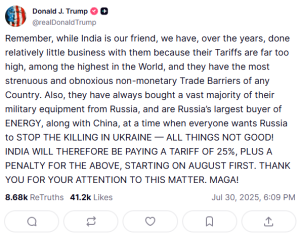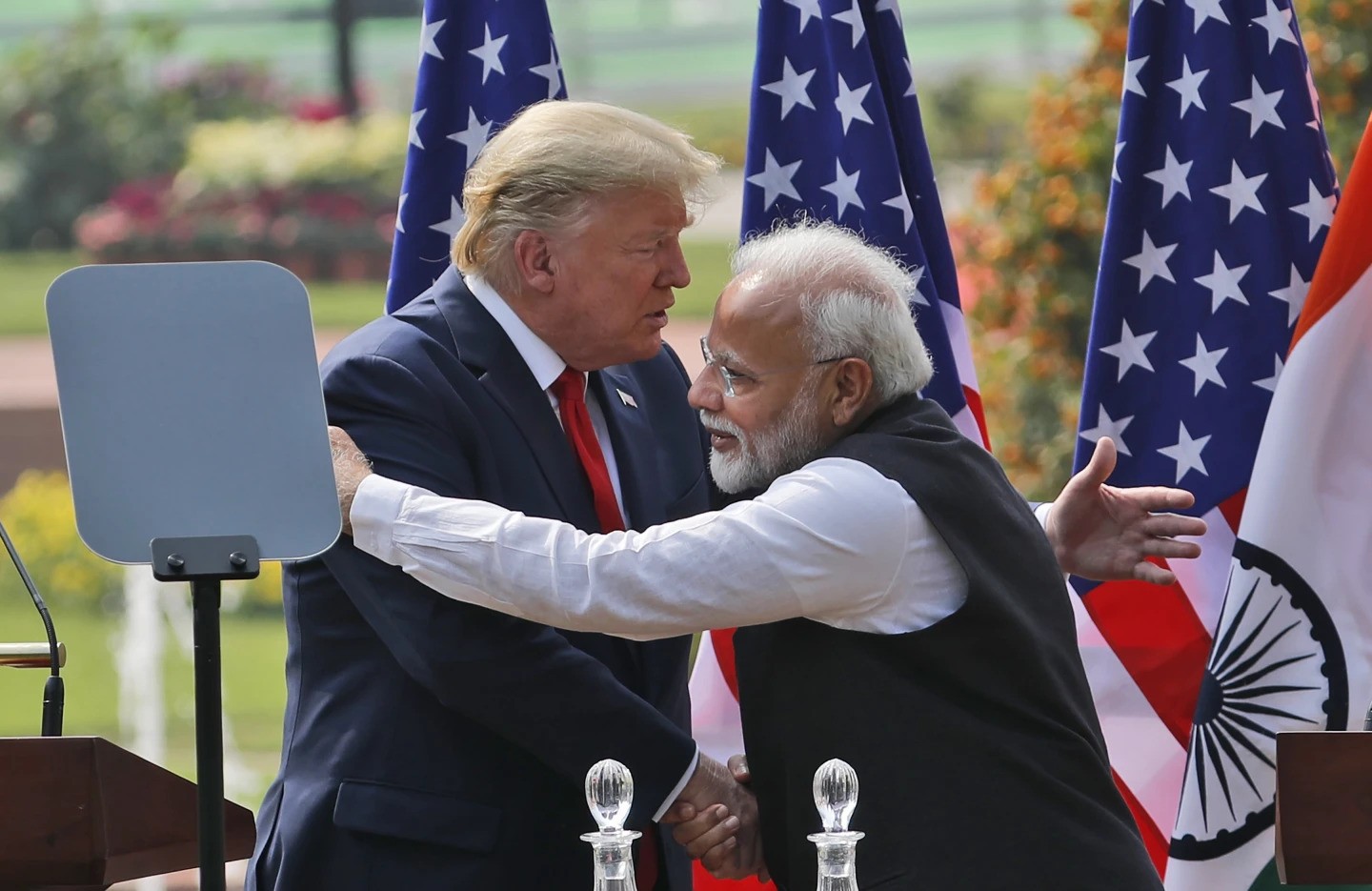US President Donald Trump’s decision to impose a 25 per cent tariff on Indian imports from August 1, along with an unspecified penalty, is expected to slow India’s economic growth, analysts say. The move comes in response to India’s continued imports of Russian oil and weapons, which Trump called incompatible with efforts to stop the war in Ukraine.
On Truth Social, Trump said India would face consequences for its trade with Russia. Indian stock markets opened lower following the announcement. Trade experts say the lack of clarity around the penalty amount adds uncertainty to the economic impact.
Commerce Minister Piyush Goyal rejected Trump’s “dead economy” comment as baseless, stating India is on track to become the world’s third-largest economy. Goyal said India will not accept coercive trade tactics and reaffirmed the government’s priority to protect farmers, workers, and entrepreneurs. He noted India remains open to sector-specific agreements if a broader deal proves difficult.
Aditi Nayar, chief economist at ICRA, said the proposed tariff and additional penalties are likely to weigh on GDP growth. ICRA recently cut its growth forecast from 6.5% to 6.2% due to the trade risk. Nomura projected a potential 0.2% hit to GDP, calling the move “growth negative.”
Negotiations for a trade deal have been ongoing. India had reduced tariffs on US products like whiskey and motorcycles to ease talks. However, Trump has repeatedly criticized India’s high tariff regime and non-tariff barriers, including digital service taxes and testing rules on imports.

Key Indian export sectors—pharmaceuticals, seafood, textiles, leather, and automobiles—are likely to be affected. Exporters warn higher costs from tariffs will reduce US demand, forcing them to lower prices and cut into profits.
India’s $45 billion trade surplus with the US has been a consistent target for Trump, who insists on reducing it. The administration has also expressed concern over India’s regulations and slow market access for American goods.
India’s Commerce Ministry said it is assessing the implications of the announcement. It reiterated that India remains committed to a balanced trade agreement while protecting national interests.
The opposition Congress party criticized Prime Minister Modi, citing his past public support for Trump. “Trump goes on to impose such a harsh tariff on India. It is a catastrophic failure of foreign policy,” the party posted on X.
Talks between the two countries are expected to continue through August. A US delegation is scheduled to visit New Delhi to finalize a possible deal. Even if successful, experts say tariffs may still remain between 15% and 20%.
Despite being less dependent on goods exports than some Asian economies, economists warn India’s growth may slow further. Nomura noted that the situation increases the likelihood of interest rate cuts by the central bank to support domestic demand.
Bilateral trade between India and the US stood at $190 billion last year, with a target of $500 billion in the coming years. Whether that goal remains realistic now depends on the outcome of the ongoing trade talks.


